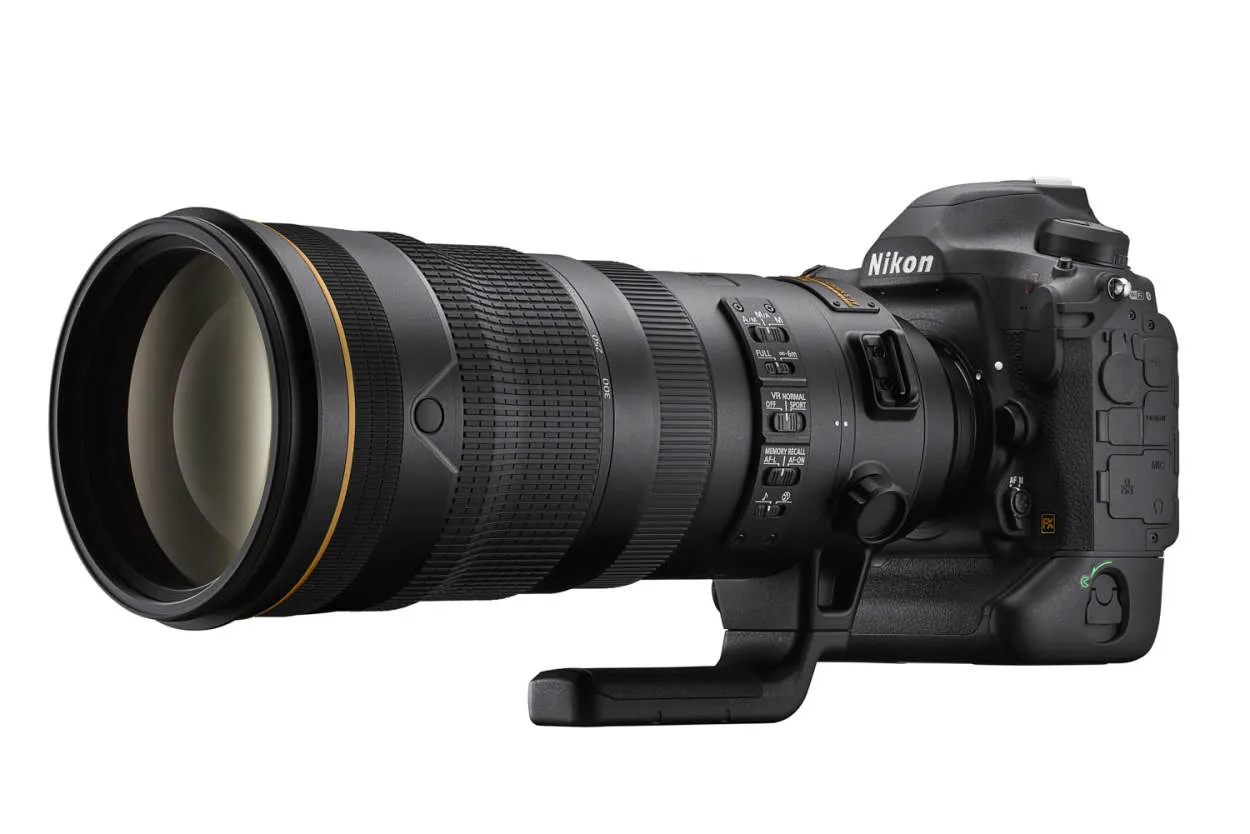In this article, we will explore the latest innovations in DSLR technology in the USA. From groundbreaking features to cutting-edge advancements, we will delve into the world of digital photography to discover how these new developments are revolutionizing the way we capture our moments.
Exploring the Rise of Mirrorless Cameras
In recent years, the photography industry has witnessed a remarkable shift in the market with the rise of mirrorless cameras. These innovative devices have gained significant popularity, particularly in the United States. With their compact size, improved technology, and advanced features, mirrorless cameras have become a favored choice among photographers of all levels.
One of the key advantages of mirrorless cameras is their size and weight. Unlike traditional DSLR cameras, which are bulky and heavy due to the presence of the mirror box and pentaprism system, mirrorless cameras are much more compact and lightweight. This makes them highly portable and ideal for travel photography, street photography, and other on-the-go shooting situations.
Another noteworthy feature of mirrorless cameras is their electronic viewfinder (EVF). While DSLRs use an optical viewfinder, which reflects light through the mirror, mirrorless cameras utilize an EVF that digitally displays the image in real-time. This provides photographers with a preview of how the final image will turn out, including adjustments for exposure, white balance, and other settings. The EVF offers a more immersive shooting experience and allows for greater creativity and precision in capturing the desired shot.
Moreover, mirrorless cameras offer an extensive range of lenses, giving photographers the flexibility to experiment with different focal lengths and achieve diverse creative effects. Additionally, many manufacturers have developed adapters that allow compatibility with DSLR lenses, expanding the options available to photographers who already own a collection of lenses.
In terms of image quality, mirrorless cameras have made significant advancements, closing the gap with DSLRs. The latest mirrorless models feature high-resolution sensors with impressive low-light performance, enabling photographers to capture stunning photos even in challenging lighting conditions. The absence of a physical mirror also contributes to a reduction in vibration, resulting in sharper and more stable images.
In conclusion, the rise of mirrorless cameras has revolutionized the photography industry in the USA. The compact size, advanced technology, and excellent image quality they offer have made them a preferred choice for photographers seeking more portability and versatility without compromising on performance. As technology continues to evolve, we can expect further innovations and improvements in the mirrorless camera market, providing photographers with even more exciting possibilities in the future.
Understanding the Power of Full-Frame Sensors
In this article, we will delve into the topic of full-frame sensors and their significance in modern DSLR camera innovations in the USA.
The Basics of Full-Frame Sensors
Full-frame sensors refer to the image sensors used in digital cameras that have the same size as traditional 35mm film. Unlike smaller sensors found in crop sensor or APS-C cameras, full-frame sensors capture more light due to their larger size, resulting in improved image quality and enhanced low-light performance.
Better Image Quality
With a larger surface area, full-frame sensors are able to capture more detail, providing sharper and more lifelike images. This makes them particularly appealing to professional photographers and enthusiasts who demand the highest level of image quality.
Improved Low-Light Performance
Thanks to their larger pixels, full-frame sensors excel in low-light conditions by capturing more light and reducing image noise. This makes them ideal for capturing stunning nightscapes, astrophotography, or any situation where lighting is challenging.
Compatibility with Wide-Angle Lenses
Full-frame cameras allow for the full utilization of wide-angle lenses, as their focal length remains unchanged. This is different from crop sensor cameras, where the focal length is effectively increased due to the crop factor, resulting in a narrower field of view.
Conclusion
Overall, full-frame sensors are a powerful tool for photographers who seek uncompromised image quality and performance. With their ability to capture more light and detail, they have revolutionized the world of digital photography and continue to be at the forefront of DSLR innovations in the USA.
Discovering the Advantages of Wi-Fi Connectivity
Wi-Fi connectivity has revolutionized the way we use technology, and its advantages are increasingly evident in various aspects of our lives. In the realm of digital photography, Wi-Fi has become an indispensable feature in the latest DSLR innovations available in the USA.
One of the primary advantages of Wi-Fi connectivity in DSLR cameras is the ability to instantly transfer photos to other devices without the need for cables or memory cards. This convenience allows photographers to quickly share their work with clients, friends, or on social media platforms. With just a few taps, images can be wirelessly transferred to smartphones, tablets, or laptops.
Furthermore, Wi-Fi connectivity enables photographers to remotely control their cameras using dedicated mobile apps. This feature proves to be invaluable in situations where it is challenging to physically reach the camera, such as when it is mounted on a tripod or placed in a hard-to-reach location. By connecting their smartphone or tablet to the DSLR via Wi-Fi, photographers can adjust settings, focus, and capture images remotely, expanding creative possibilities.
Another advantageous use of Wi-Fi connectivity in DSLRs is the ability to utilize online cloud storage services. Photographers can directly upload their photos to cloud platforms, ensuring secure backup and easy access from anywhere with an internet connection. This feature provides peace of mind, knowing that precious images are not at risk of being lost or damaged.
Lastly, Wi-Fi connectivity allows for seamless integration with various accessories and smart devices. Some DSLR camera models support wireless flash triggers, enabling photographers to control external flashes wirelessly. Additionally, Wi-Fi connectivity opens up possibilities for wireless printing, image transfer to compatible printers, and even remote collaboration between multiple photographers.
In conclusion, Wi-Fi connectivity adds significant advantages to the latest DSLR innovations in the USA. From effortless photo transfer and remote control capabilities to cloud storage integration and compatibility with accessories, the utilization of Wi-Fi in DSLR cameras enhances the overall photography experience, facilitating convenience and expanding creative opportunities.
Exploring the World of 4K Video Recording
In this article, we will delve into the exciting realm of 4K video recording and its latest innovations in the USA. With the rapid technological advancements in DSLR cameras, capturing high-quality videos has become more accessible and convenient than ever before.
1. Enhanced Image Resolution: One of the primary advantages of 4K video recording is its exceptional image clarity. With four times the resolution of Full HD, 4K videos provide breathtaking details and vivid colors, a perfect choice for professional videographers and enthusiasts alike.
2. Smooth and Cinematic Footage: Thanks to improved image sensors and processors, DSLR cameras now offer higher frame rates and better image stabilization for smoother and more cinematic footage. Whether you’re capturing action-packed scenes or recording a heartfelt documentary, 4K video ensures a captivating viewing experience.
3. Advanced Autofocus Technology: DSLR cameras equipped with 4K video recording capabilities often feature advanced autofocus systems. Utilizing cutting-edge technology, these cameras can quickly and accurately track moving subjects, ensuring sharp focus throughout the video.
4. Flexible Editing Options: With 4K footage, you have more flexibility during the editing process. The higher resolution allows you to crop and zoom without losing sharpness, giving you more creative freedom to tell your visual story.
5. Future-Proof Investment: As the demand for 4K content continues to rise, investing in a DSLR camera with 4K video capabilities ensures your readiness for the future. With more platforms and devices supporting 4K playback, your content will remain relevant and captivating for years to come.
Overall, exploring the world of 4K video recording opens up new possibilities in visual storytelling. The innovations in DSLR cameras in the USA have made it easier for creators to capture stunning videos with remarkable detail, smoothness, and versatility.
Conclusion
In conclusion, the latest DSLR innovations in the USA have revolutionized the world of photography. With advanced features such as higher resolution sensors, faster autofocus systems, and improved image processing technology, photographers can now capture stunning images with unprecedented clarity and detail. These innovations have made DSLRs more accessible and user-friendly, allowing both professionals and enthusiasts to take their photography to new heights.




